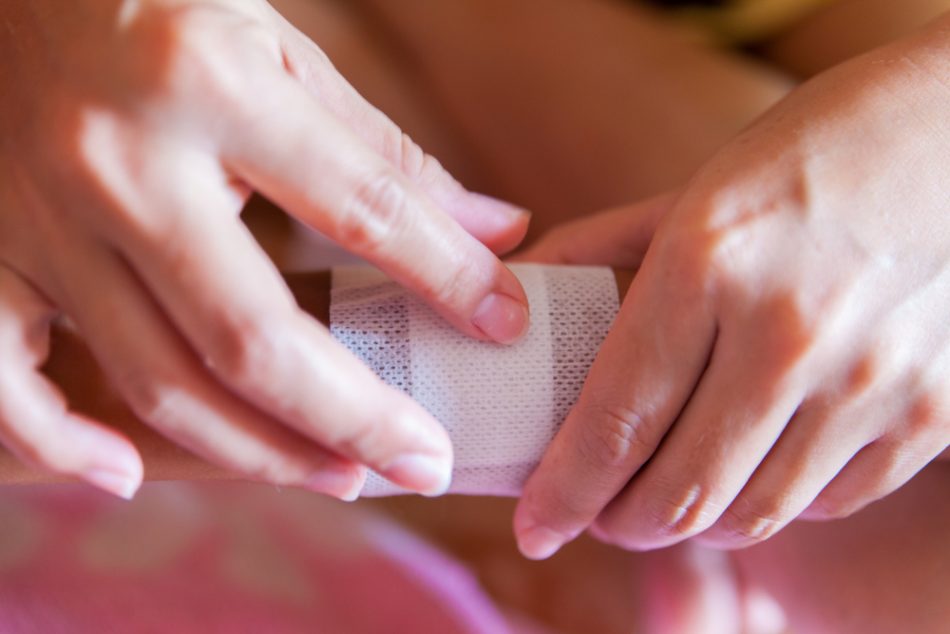We recently wrote about a bandage design that indicates potential infection. Now, there’s another smart bandage design in the works. This one, literally called SMART, aims to help first responders evaluate and treat severe burns more effectively.
Designed by U.S. Army and Massachusetts General Hospital researchers, the bandage includes a brightly emitting red porphyrin, a green reference dye, and a wound sealant. The porphyrin and dye are phosphors, so they respond to levels of oxygen. Healthy skin tissue has high levels of oxygen, while burned tissue has low levels, so when placed on a burn, the bandage glows to indicate the severity of the injury. The bandage’s detection method can be activated with the flash from a smartphone camera, making it usable in even remote areas.
Telling how severe a burn is as quickly as possible is critical as mistreating a burn can lead to infection and even death. Also, mistreated burns can cause the body to contort into odd positions, requiring further rehabilitation surgeries down the road.
Once the burn detection technology is perfected, the team hopes to expand their design to include burn treatment and monitoring technology, all in one convenient bandage.












